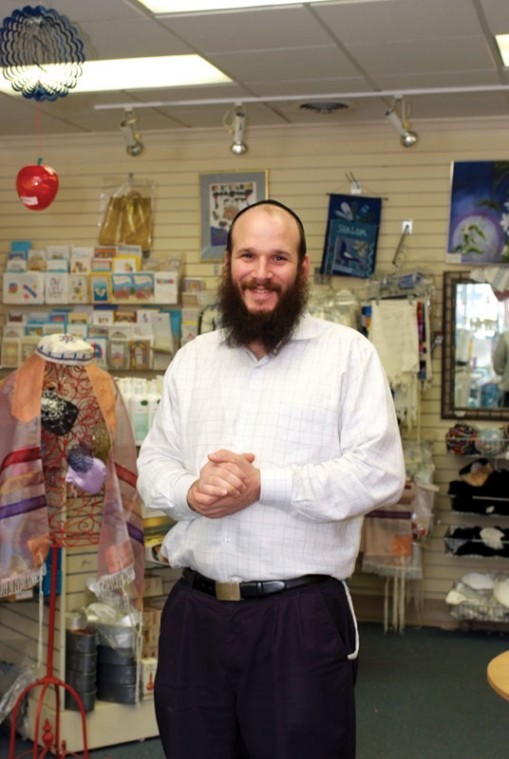L’Chaim to Passover: Savoring life, savoring wine
Published April 13, 2011
Can you remember exactly when you graduated from grape juice to super sweet Manischewitz or Mogen David Concord wine? I have to admit that I don’t recall the precise holiday or Shabbat, but I do certainly remember a childhood Passover when my older brother took that leap. There were a lot of people at our seder table and I doubt my parents noticed how seriously Bob was following the four cup rule. But soon none of us could miss the fact that he had toppled right off his chair.
Although it wasn’t the most sophisticated introduction to wine, it was a revelation of sorts. Because years later, when my brother was in college, he developed an affinity for complex dry red wine, particularly Cabernet Sauvignon. I can remember visiting Bob at Vanderbilt University and having him teach me how to sip and savor the flavors as they unrolled in my mouth.
ADVERTISEMENT
Maybe that’s why today I so strongly associate Passover with the respect that my brother and I have for wine. Bob and I don’t see each other that often, but when he does visit St. Louis, there is always a long evening discussion over a bottle of complex, dry kosher red wine. He is an Orthodox Jew living in Skokie, Ill. and I am Conservative – so we have our differences in observances – but when we share wine, we share our spirituality. And we do it seated at the same family table where his first Passover wine encounter occurred.
I used to think this was a rather unique experience, until I learned a Talmudic expression from Rabbi Avi Rubenfeld of the Chabad of Chesterfield: Nichnas yayin yatza sod “when wine goes in, secrets come out.” In fact the word yayin and the word sod, which means secret, both have the numerical value of 70.
If you Google the expression, you’ll find examples – particularly from Purim celebrations when alcohol consumption is encouraged- in which the drinking of wine has led to a drop in inhibitions and resulting spiritual insights and ability to focus ones thoughts. Rabbi Rubenfeld suggested a fascinating story that can be found on the Chabad website called “A Purim Secret.” It’s about a man named Baruch Mordechai, who lived in the 1800s and was believed to be a simpleton. However, on the 70th anniversary of his bris, which occurred on Purim, he was able to offer an extremely scholarly discourse after consuming a large tumbler of strong wine.
There are even some opinions that the forbidden fruit in the Garden of Eden was actually the grape. According to this view, the grape opened the eyes of Adam and Eve to the things they would not have seen otherwise.
ADVERTISEMENT
While I certainly can’t claim that drinking wine has ever provided me with profound intelligence or made me a scholar, there have been times when just the right amount has opened my mind to something deeper, as in my discussions with my brother. Rabbi Rubenfeld certainly has a point when he says that “wine is not just a drink.”
“Wine has taste, depth, character,” he said. “Just as there are many levels of studying Torah. There is a whole palate that a person can accomplish. There’s room for differences. As with wine, there is a palate of tastes.”
Indeed, wine can be dry, semidry, semisweet and sweet. It can be oaked or unoaked. It can be young or aged. It can be sparkling or still. It can be light, medium or full-bodied. It can be simple or complex. It can taste like black cherries or grapefruit and it can be red, white or rose.
Regardless of its taste or style, on a very fundamental level, “Wine is essential to Judaism…it’s essential to who we are,” Rabbi Rubenfeld said.
In fact, wine is considered such a spiritual substance it is the only beverage with its own blessing before consumption, said Rabbi Lane Steinger of the Shir Hadash Reconstructionist Community . The blessing concludes with borei pri hagafen, “who creates the fruit of the vine.”
While there are plenty of warnings in the Torah and scholarly commentary about overindulgence and improper imbibing, wine is part of all lifecycle events in Jewish life. It is consumed to express joy and used to raise human events to a higher spiritual level, said Rabbi Steinger, who took an enology course in Cincinnati while studying to become a rabbi.
It is used at weddings, circumcisions and in Talmudic times at the house of the mourners. It is a blessing over the cup of wine that constitutes the Kiddush ceremony that welcomes Sabbath into our homes and wine is used during Havdalah at the conclusion of the Sabbath. Whenever possible, wine is even used to conclude the grace after meals, Birkat Hamazon, when a large enough quorum of people has eaten together.
There’s even a line in “Psalm 104:15” that says “Wine maketh glad the heart” and, as Rabbi Steinger pointed out, the popular Jewish toast L’Chaim, is said before we drink wine.
“Wine is a metaphor for life,” Rabbi Steinger said. “Like life, it’s something to savor.”

















